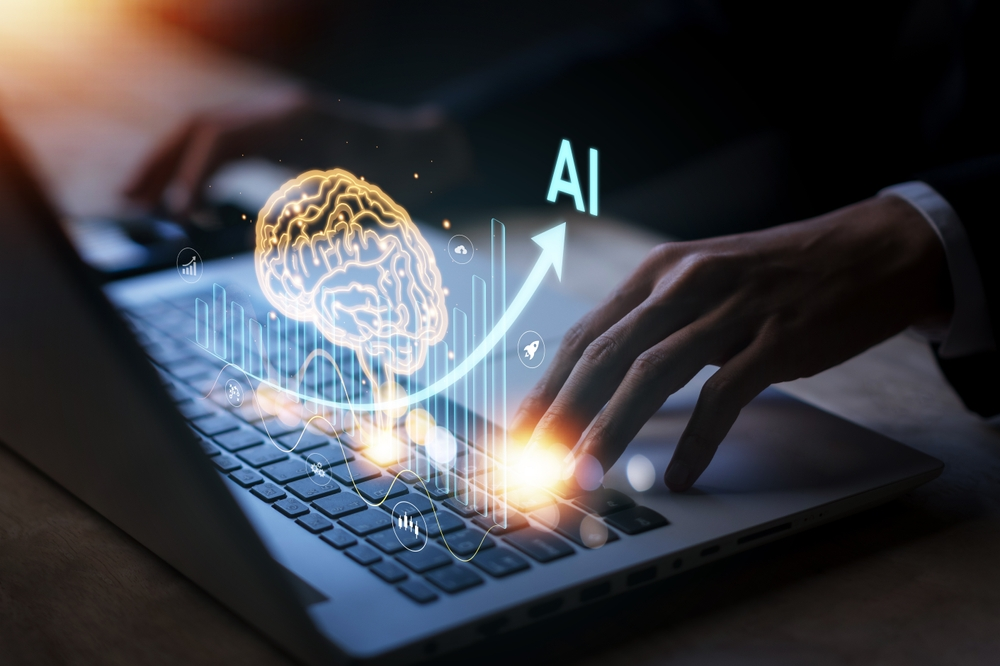As you might know, Artificial Intelligence (AI) has changed how many of us do our jobs, from software development to managing daily operations; there are few workers who can say this new technology has not impacted their day-to-day lives. And it's only a matter of time before they do.
Digital product development is no exception: technology plays an essential role in allowing companies to remain competitive, innovative, and adaptive to changing market needs.
In this article, we explore how Artificial Intelligence plays a fundamental role in digital product development in two main areas: by providing practical solutions and by enhancing creative processes. Let's get started!
(Discover how to effectively plan your product's journey and ensure alignment across teams with our guide to building a product roadmap)
Adapting to User Behavior and Consumption Trends
AI has now made more efficient what once relied on time-consuming and often uncertain methods like surveys, sales data analysis, and manual trend observations.
AI's ability to adapt to user behavior and consumption trends is one of its most impactful benefits. AI tools can analyze large datasets to detect patterns in user interactions, enabling companies to predict needs, personalize experiences, and proactively respond to changes in user preferences as they are happening.
This makes digital products more responsive and user-centric, ultimately increasing customer satisfaction and retention.

Enhancing, Not Replacing
This is true in any area, but especially for product development: Tools like Generative AI should be seen as a means to enhance human creativity, decision-making, and efficiency—not as a replacement.
It amplifies the capabilities of developers, designers, and product managers by automating repetitive tasks, analyzing vast amounts of data, and providing insights that lead to more informed decisions. Some of the most-used conversation-format tools this past year have been ChatGPT or Jasper to generate ideas for marketing campaigns or content outline, which can help creatives overcome writer's block or think of new approaches to a problem.
On the other hand, designers can use AI tools like DALL-E to visualize concepts quickly, serving as a starting point for more refined artistic work. Many companies have opted to enhance their workers' everyday workday tools, such as Google Suite with Google's AI Gemini, which has the ability to screen emails and categorize them in order of priority, to name one function.

A Work Buddy
Think of AI as a work buddy—one that doesn't take over but helps shoulder the workload. By automating mundane tasks, AI allows product teams to focus more on innovation and solving complex challenges.
This symbiotic relationship enhances productivity and helps teams develop digital products that are smarter, faster, and more aligned with market demands.
AI's role as a supportive companion in the workspace can drive efficiency while maintaining the human touch, which is essential for creativity.
Real-World Applications of AI in Product Development
AI is already being used across the product development lifecycle to improve processes and outcomes.
From using AI to generate ideas and prototypes in the early stages of product design to employing machine learning models to predict maintenance needs, AI applications are diverse and powerful. Companies that integrate AI into their development processes have reported faster iteration cycles, better risk management, and higher customer satisfaction.
AI is also implemented in manufacturing and maintenance processes. Aerospace manufacturers are integrating AI for factory automation and quality control. Automated quality control uses AI algorithms to analyze images of aircraft components during production, ensuring they meet quality standards by detecting defects or irregularities, which significantly reduces human error and enhances product quality. AI also optimizes supply chain logistics, predicting demand, managing inventory, and identifying cost-effective suppliers to streamline production.
In terms of maintenance, AI tools like Large Language Models (LLMs) can assist service engineers by processing technical manuals and providing troubleshooting guidance. AI-driven maintenance not only helps in identifying potential issues before they become significant problems but also supports engineers in delivering timely solutions.
(Interested in other ways AI can help you solve your business challenges? Read our full guide on how to modernize legacy systems with AI)
AI is also being used to enhance internal products developed by companies like Jalasoft. One such example is Cosmic Latte, a research and development project by Jalasoft that handles, organizes, and centralizes customizable survey, evaluation, and questionnaire data, simplifying information analysis and generating relevant metrics according to each company's specific needs.
Recently, a new version of Cosmic Latte was launched, integrated with OpenAI, and is currently being tested by selected users. This integration allows for rapid, personalized work plan generation for 360 evaluations using Large Language Model Services (LLMS) based on Open AI 3.5 and Open AI 4.0. This advancement particularly benefits managers and team leads by automating the collection of work plans for 360 evaluations, helping them to identify and understand the goals and objectives for their engineers more effectively.
By automating these processes, Jalasoft empowers managers to provide targeted support and guidance, ultimately facilitating personal and professional growth for engineers. This fosters an environment conducive to development and success within the organization, demonstrating how AI can enhance product capabilities and deliver meaningful improvements in operational efficiency.
Challenges and Considerations in Using AI
Despite its many advantages, there are challenges when implementing AI in product development. Integrating AI requires a robust data infrastructure, and companies must address data privacy concerns and ensure transparency in their algorithms. Additionally, not all teams have the expertise to handle AI technologies, which can make the implementation process more challenging. However, by focusing on best practices such as investing in training, adopting ethical guidelines, and starting small, these challenges can be mitigated.

Conclusion: Why AI is an Opportunity Not to Miss
AI offers an unprecedented opportunity for companies seeking to improve their digital product development processes. However, at Jalasoft, we are aware of the potential risks associated with AI integration into software development processes. As a result, our developers do not use AI tools in their daily work unless explicitly authorized by the client and under conditions specified by the client. Instead, we reserve AI experimentation exclusively for internal projects within our company. This approach ensures that we prioritize client confidentiality and security while maintaining a commitment to innovation and exploration within our own operations.
By leveraging AI, companies can make their products smarter, improve user satisfaction, and stay ahead of industry trends, like we did with our Cosmic Latte enhancements. Embracing AI doesn’t mean replacing people but rather enhancing their capabilities, creating better products, and setting new standards of excellence in an increasingly competitive landscape.
Now is the time to explore how AI can elevate your product development efforts and help you unlock new opportunities.
